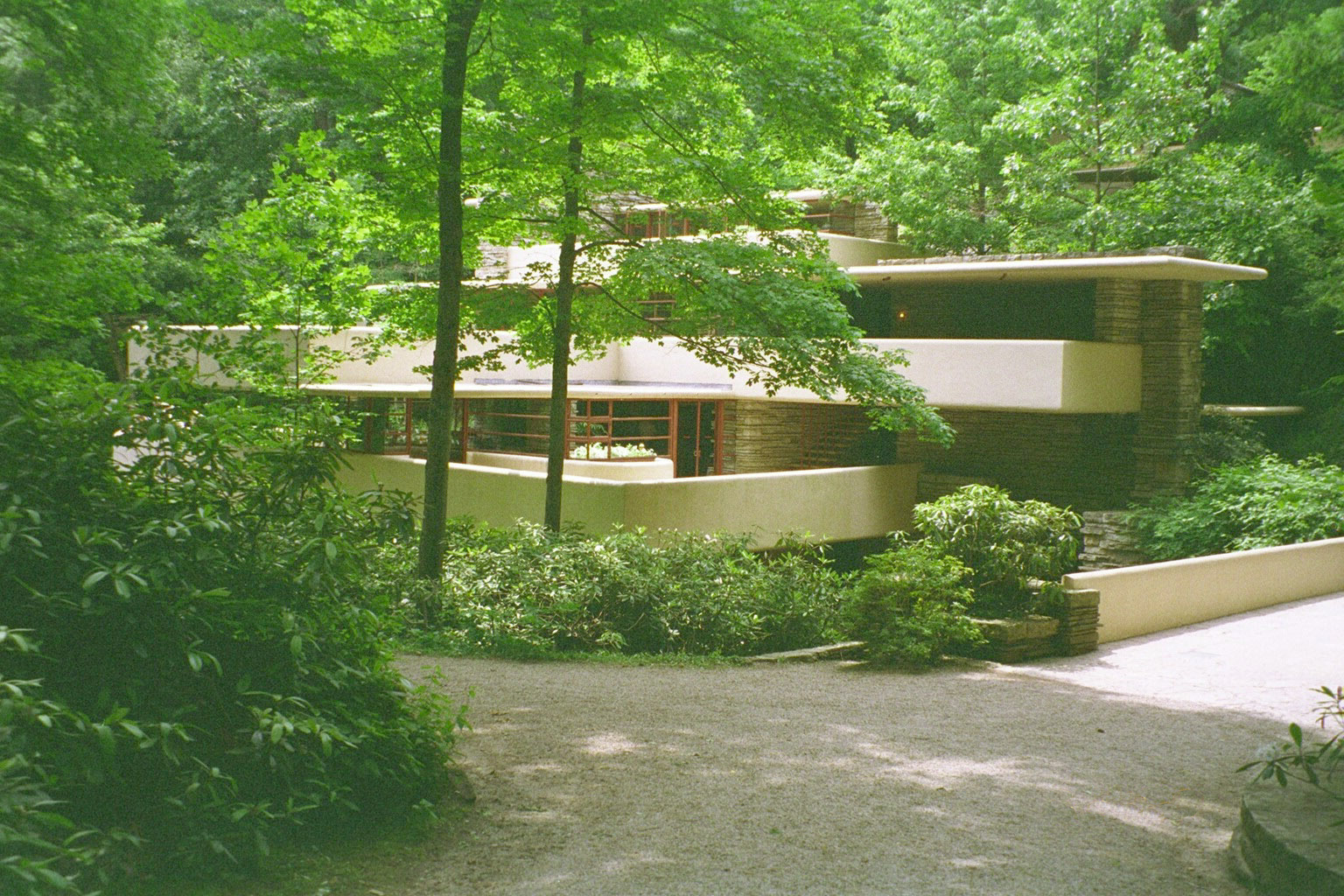

2įallingwater is famous from all over the world many thousands of visitors come each year to its remote site. Yet we cannot help feeling that there is more to this design than even that this is an architecture that seizes our imagination, letting us see space and habitation in ways that seem new, but which we simultaneously feel to be ancient, somehow fundamental to our human nature. In its careful yet startling integration of stone walls anchored to the bedrock and modern reinforced concrete terraces hovering in space, Connors states that Fallingwater may be understood as 'one of the great critiques of the modern movement in architecture, and simultaneously one of its masterpieces'. You'll find descriptions and information about various parts of the house over the waterfall designed by Frank Lloyd Wright, one of the foremost architects of all time.įallingwater opened a new chapter in American architecture, and is perhaps rightly considered Wright's greatest work, for he was first and foremost an architect of houses. Take a virtual tour of Fallingwater by visiting the Fallingwater pictures pages. Visitors, too, in due measure experience Wright's architecture as an expansion of living.

So people are cosseted in to relaxing, into exploring the enjoyment of a life refreshed in nature. Sociability and privacy are both available, as are the comforts of home and the adventures of the seasons. The paths within the house, stairs and passages, meander without formality or urgency, and the house hardly has a main entrance there are many ways in and out. The materials of the structure blend with the colorings of rocks and trees, while occasional accents are provided by bright furnishings, like wildflowers or birds outside. Their attention is directed toward the outside by low ceilings no lordly hall sets the tone but, instead, the luminous textures of the woodland, rhythmically enframed. For example, although all of Fallingwater is opened by broad bands of windows, people inside are sheltered as in a deep cave, secure in the sense of hill behind them. He understood that people were creatures of nature, hence an architecture which conformed to nature would conform to what was basic in people. But Wright's insight penetrated more deeply. When Wright came to the site he appreciated the powerful sound of the falls, the vitality of the young forest, the dramatic rock ledges and boulders these were elements to be interwoven with the serenely soaring spaces of his structure. Its dual mission is to preserve the cultural, built and natural environments that comprise the Taliesin property and to conduct public and educational and cultural programming that provides a greater understanding of Frank Lloyd Wright’s architecture and ideas.Fallingwater has provided enjoyment to many people over the years as a stimulating weekend retreat for the Kaufmann family and their friends, as a source of pride to the architect and his associates, and now - cared for by the Western Pennsylvania Conservancy - as an exceptional experience for visitors from near and far. Taliesin Preservation is a 501(c)(3) founded in 1990. Other buildings include: Romeo & Juliet Windmill (1896), Hillside Home School (1903), Tan-y-Deri (1908), Hillside Drafting Studio (1932), Midway Barn (1949), Hillside Theater (1952), and the Frank Lloyd Wright Visitor Center (1967).
#Frank lloyd wright waterfall house tour series
The Taliesin residence is the heart of a series of buildings that Wright designed for himself and his family members on the estate. Taliesin was the principal residence of Wright as a mature designer, and the valley was his inspiration and life-long laboratory for architectural designs and innovation. Taliesin in its three iterations (1911, 1914, 1925) represents the most complete embodiment of Wright’s philosophy of Organic Architecture. Taliesin, the home, studio and country estate of Frank Lloyd Wright, is located in the hilly Driftless Region of southwestern Wisconsin near Spring Green. It is the name of Wright’s house as well as the 800-acre estate that includes buildings from all decades of Wright’s career. Taliesin has a commanding presence in Jones Valley, the watershed where Wright’s Lloyd Jones ancestors settled after immigrating from Wales in the 1860s. Taliesin was named in honor of his Welsh heritage, was the name of a druid bard, and literally means “shining brow.” Its many wings and terraces reach out around the ridge of the hill, embracing the site and standing as “brow.”


 0 kommentar(er)
0 kommentar(er)
